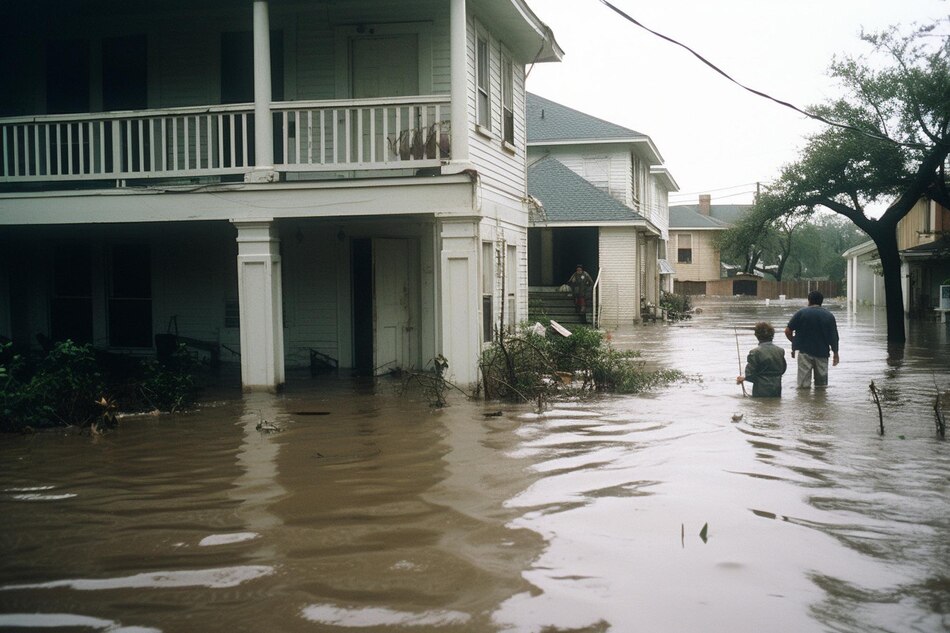Households at risk of flooding must understand insurance. Unlike homeowners insurance, flood insurance covers flood damage. Flash floods, storm surges, melting snow, and heavy rain may produce floods. Flood insurance is essential because natural disasters may damage property. Separating flood and homeowners insurance is crucial. The majority of homeowners insurance excludes flood damage.
Knowing the difference assists homeowners in understanding why they need flood insurance. Insurance is recommended and necessary for inhabitants of high-risk flood zones. Mortgage lenders may mandate flood insurance for certain homes to safeguard their investments and homeowners. Understand flood insurance to protect your property and wallet.
Types Of Flood Insurance Policies
The main types of flood insurance are NFIP and private flood insurance. FEMA’s NFIP standardizes coverage for homeowners, renters, and businesses in participating communities. These policies limit coverage and levy premiums by property type and region. Private companies offer flood insurance and provide more variety and pricing.
Private insurers may provide broader coverage, amenities, and customizable policies. NFIP is government-backed, although private flood insurers offer coverage. To get affordable flood insurance, homeowners must understand the differences between these policy types. Both options are beneficial, but personal preferences matter.
Coverage Under Flood Insurance
Flood insurance covers many home and property losses. Homeowners seeking financial stability must comprehend this coverage.
Flood insurance must include dwelling coverage. This protects your home’s structure. The foundation, walls, roof, doors, windows, built-in appliances, electrical systems, and additional structural elements are covered. Dwelling insurance covers flood damage and reconstruction. This coverage protects your home’s structure and reimburses repair costs.
Flood insurance also covers your home’s contents. Valued items, including furniture, appliances, electronics, and apparel, are protected. Contents coverage replaces or repairs flood-damaged objects. Financial support helps you recover from flood damage and replace vital items.
Other Structures, Barns, sheds, fences, etc., are covered. When these homes flood, other buildings pay for repairs or replacement. This reduces flood damage costs for homeowners with additional structures.
Flood insurance provides loss-of-use compensation for temporary living expenses. If flood damage renders your home uninhabitable, loss of use coverage covers extra living expenses. While your house is reconstructed, you may need temporary housing, food, and other essentials.
Flood Insurance Cost Factors
Several factors affect flood insurance prices. An analysis of flood risk and budget should include these factors’ impact on policy affordability. Flood insurance premiums depend on location. Flood-prone properties cost more, while premiums are lower for low-risk homes above flood level.
Elevation matters. Homes above the base flood elevation get discounts. Low-lying and near-water homes are more prone to flood, raising insurance costs. Selecting coverage limits affects your premium. Less coverage lowers costs, whereas more coverage raises rates.
Coverage and money must be balanced to make informed choices. Understanding these price factors helps homeowners buy flood insurance that meets their budget and risk. Protecting your home from flood damage requires this knowledge.
What’s Not Covered By Flood Insurance
To secure your home and assets, you must know what flood insurance doesn’t cover. Knowing typical exclusions is also necessary to calculate insurance needs and decide whether to expand coverage.
Water damage from neglect or inadequate maintenance is typically excluded from flood insurance. Due to neglected foundation faults or drainage systems, your insurance may not cover flood damage. Flood avoidance requires constant property maintenance.
Moisture and mildew damage not triggered by a covered risk are also excluded. Flood insurance may not cover mold or moisture damage from insufficient ventilation or a non-covered peril. Avoiding this damage involves home ventilation and moisture control.
Seismic activity and subsidence are typically not covered by flood insurance. These events may need additional endorsements or insurance for prone homes. Understanding policy constraints helps with flood insurance exclusions. Homeowners may cover these exclusions by endorsements or riders.
You may support structural and functional basement improvements. Knowing these exclusions and endorsements might help you personalize flood insurance. These exclusions and coverage gaps must be addressed to ensure your flood insurance policy protects your house and belongings.
The Importance Of Floodplain Management
Flood risk reduction and insurance affordability depend on floodplain management. This comprises various flood mitigation measures. Floodplain management impacts property safety and insurance costs. Floodplain management includes levees, drainage systems, and zoning regulations that ban construction in flood-prone areas. These solutions reduce floods and insurance costs.
Community-based floodplain management may aid homeowners. It improves safety and reduces flood risk, which insurance companies may consider when calculating rates. Understanding floodplain management may protect homes and lower flood insurance premiums. The multimodal strategy protects your money and property.
How To Purchase Flood Insurance
Protecting your house and money requires flood insurance. NFIP and private insurers provide flood insurance to homeowners. NFIP members standardize insurance products. Rates and coverage vary by geography and property type in this government-backed program.
Insurers offer houses NFIP coverage. Private insurers cover floods. Private insurers provide more variety and pricing. They may also offer broader coverage, amenities, and customizable policies. Homeowners may shop for insurance.
Conclusion
Flood insurance protects homes from financial losses. Flood-prone properties must understand flood insurance types, policy exclusions, and costs. Informing homeowners about flood risk helps them in choosing the proper flood insurance. Assess your flood risk immediately to protect your home and money.
